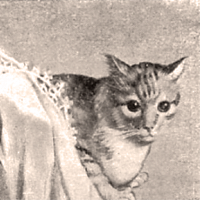 |
| From a private collection in Florence, since donated to the Salvatore Ferragamo Museum. |
The following is an English version of my latest column in the Italian needlework magazine Giuliana Ricama issue no. 6. A couple of things to note: the Salvatore Ferragamo Museo in Florence gave me photos to include in the publication but I did not ask for permission to publish them here, so I do not include them with this translation. If you want to see them, obviously if you are in Italy you can get the magazine or go to the museum but you can also check out their website or you can explore the 20th century archives of the Ministry of Goods and Cultural Activities website.
 |
| From a private collection in Florence, since donated to the Salvatore Ferragamo Museum. |
“There is no limit to beauty, no saturation point in design, no end to the materials a shoemaker may use to decorate his creations so that every woman may be shod like a princess and a princess may be shod like a fairy queen.” -- Shoemaker of Dreams. The Autobiography of Salvatore Ferragamo, London 1957, Italian edition 1971, edited by S. Ricci.
At the end of the 1920s Salvatore Ferragamo (1898-1960), known Italian fashion designer and founder of the fashion house of the same name, decided he wanted to use needle lace on a few models of his shoes. The nearby small towns of Tavarnelle, Mercatale and Greve, located between Florence and Siena, were centres of lace production in those days. Several models were created using the work done by local embroiderers in their own homes. Tavarnelle lace was used by Ferragamo again in the 1930s and 1950s and his big innovation was the use of colour in the needle lace. Some shoe models were called the Anna, Carina, Iride, Merletto and Sofia.
 |
| Ferragamo shoe model from 1930-1932. |
Thanks to Mr. Ferragamo, the lacemakers of Tavarnelle embroidered for the most famous women of the day like Sophia Loren, Anna Magnani, Jacqueline Kennedy Onassis, Elisabeth Taylor, Audrey Hepburn and many more.
In the archives of the Salvatore Ferragamo Museum in Via Tornabuoni, Florence are models of shoes and sandals decorated with the lace of Tavarnelle but unfortunately nothing is displayed in the museum's permanent exhibition. You can however write to the museum and make an appointment to study them.
In 1906 a nun named Arcangela Banchelli arrived in Greve in Chianti and, being acquainted with the technique of needle lace, taught it to the students of the embroidery school which was one of the activities cared for by the Order of the Servants of Our Lady of Sorrows.
Over time, the fame of this lace arrived in Florence and very soon it was popular with the companies who created trousseaux. The first commissions came from them but soon commissions were also arriving from private individuals. At one time every girl in the area had tablecloths, curtains and other household linen items in their trousseaux decorated with the lace of Tavarnelle. In the beginning the lace was quite complex but over time, due to the high commercial demand, it became more simplified in order to reduce production time.
 |
| Two doilies of Tavarnelle lace from my collection. |
About five years ago a lady named Carla Cantoni from San Casciano Val di Pesa decided to recreate an old design of a Ferragamo shoe with Tavarnelle lace for her own personal use:
 |
| Created for private use by Carla Cantoni, San Casciano Val di Pesa. |
In 2002 Ebe Ciampalini Balestri published a small volume (in Italian) on this technique called: Il "Punto Tavarnelle", e dintorni... It is still available direct from the Pro Loco di Tavarnelle tel: 055 8077832.
Thank you very much to Blandina for the use of her photos of her mother's shoes which she donated to the Salvatore Ferragamo Museum and to Carla for the photos of the lovely shoes that she made for herself.







wow so lovely and funcinal
ReplyDeleteReally interesting, thank you.
ReplyDeleteLes chaussures sont magnifique bonne nuit Marie-Claire
ReplyDeleteChe emozione vedere le scarpe della Mamma in questo post! Articolo molto interessante, come sempre le tue ricerche sono accurate, e leggerti è un piacere oltre che istruttivo.
ReplyDeleteWhat a lovely post! I have been to the Ferragamo museum in Florence, and it is absolutely magical. When I visited (2013), the guided tour ended with a 20-minute-or-so film retelling of Ferragamo's early life. It felt like a fairytale. I think that people who wouldn't consider themselves interested in shoes, fashion, or textiles would really enjoy the museum. I would say it was one of the top two "company" museums I visited in Italy (the other being the Vespa/Piaggio museum).
ReplyDeleteSuch a lovely post Thankyou .
ReplyDelete